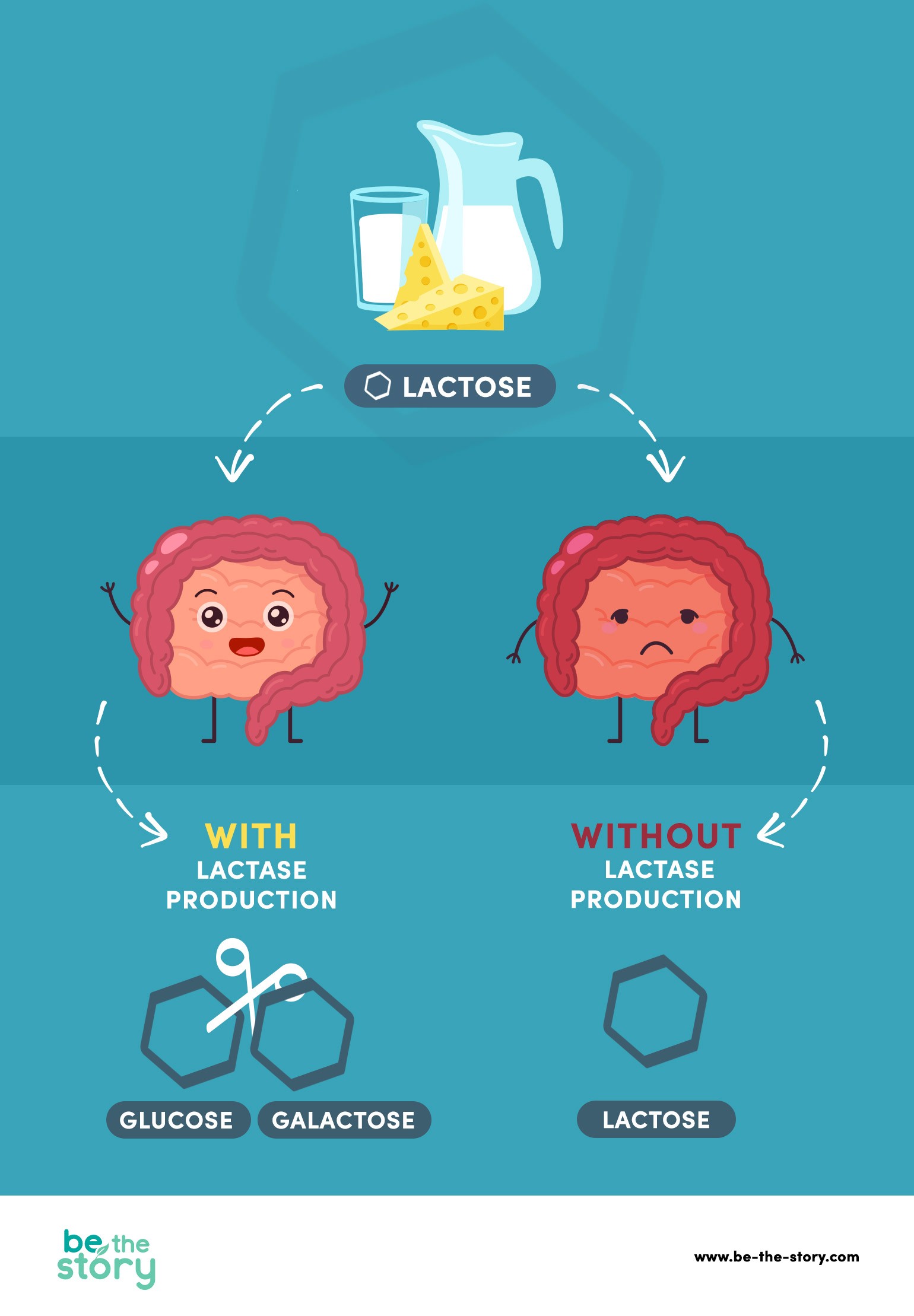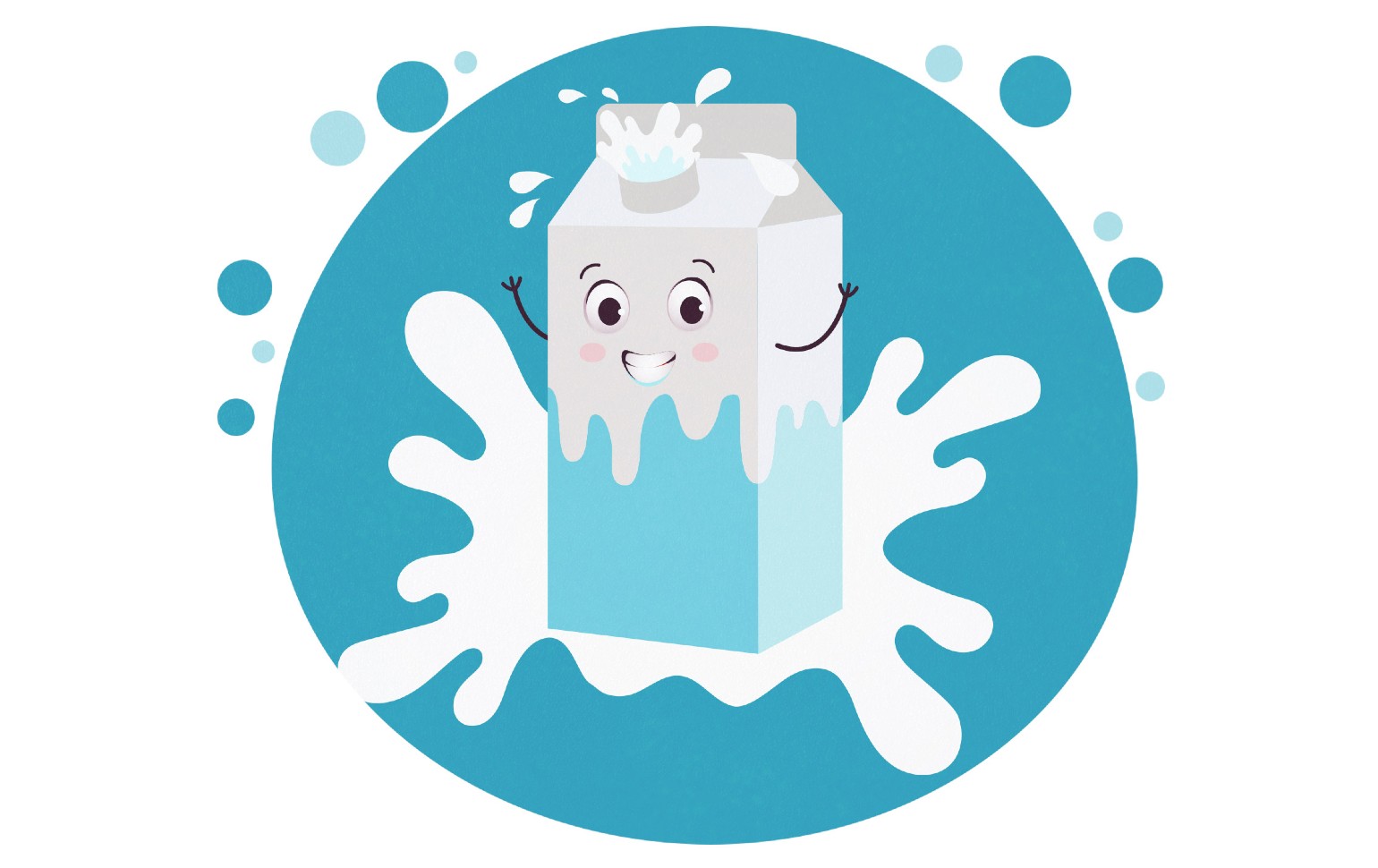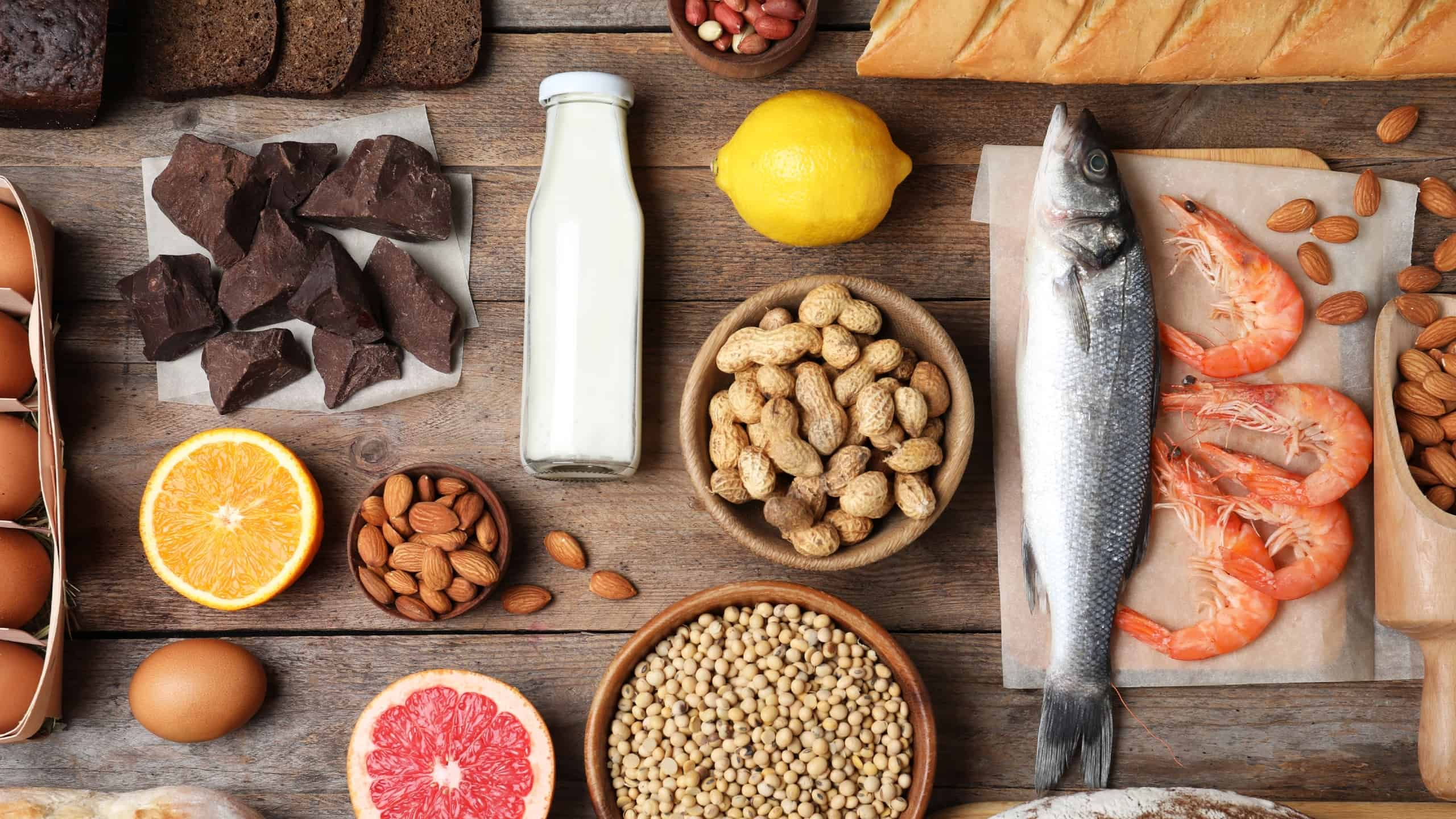Lactose intolerance: why is it so intolerable?
In most cases, the first contact of a person with food is through breast milk. That being said, one would expect to maintain a good relationship with milk throughout life, but that isn’t always the case.
It is estimated that 65% of the world’s population has lactose intolerance. It’s (a lot) more common than gluten intolerance.
Let us introduce you to lactose
Lactose is a type of sugar found in milk and its derivatives. It contains two simpler sugars: glucose and galactose. For lactose to be correctly digested, the body needs to break the link between these two sugars through the action of an enzyme called lactase, produced in our intestines.

What is lactose intolerance?
It is a medical condition characterised by a difficulty in digesting this sugar, caused by lactase insufficiency. When not properly digested, lactose accumulates in the gut, being fermented by intestinal bacteria and causing symptoms such as abdominal pain and bloating, flatulence or diarrhoea.
However, it’s possible to ingest small amounts of lactose while being lactose intolerant, without feeling any of the typical symptoms. This is because the level of intolerance depends on the amount of lactase produced by the body, which varies from person to person. A lower production of lactase increases the level of intolerance and consequently the occurrence of symptoms.
The most common type of lactose intolerance is that which appears in adulthood, since there is a natural tendency for the production of lactase to decrease as age advances. Lactose intolerance can also be secondary to diseases affecting the intestine, such as celiac disease, gastroenteritis or Crohn’s disease, and in these cases intolerance can be temporary. It can even be congenital, a rare condition in which very little or no lactase is produced from birth.
Attention! Intolerance and allergy are two different things.
Allergy vs. Intolerance
-
Allergy to milk protein
Allergy to cow’s milk proteins is the most common food allergy in childhood and is an adverse response of the immune system to these proteins. It causes symptoms that can take hours or days to manifest and can be skin-related, such as itching, hives or swelling of the lips and tongue, or gastrointestinal, such as vomiting, diarrhoea, constipation or abdominal pain. Respiratory symptoms may also occur, such as chronic cough or difficulty breathing. This allergy is considered transitory and is usually outgrown by the third year of life, rarely remaining into adulthood.
-
Lactose intolerance
Unlike allergy to milk proteins, lactose intolerance is an adverse body reaction that does not involve the immune system and mostly appears in adulthood and continues throughout life. The symptoms are gastrointestinal, such as abdominal pain and distension, nausea, diarrhoea or flatulence, and appear about 30 minutes to two hours after ingestion of lactose and may remain active for hours. While in cases of allergy, cow’s milk and its derivatives must be totally excluded, in this case it is possible to consume small quantities of lactose.
The controversy surrounding milk

There are many questions about the need for milk consumption in adulthood and its effects.
Tânia Furtado, Jerónimo Martins Group’s nutritionist, answers some of them:
-
Is milk healthy?
Milk is known to be a source of calcium – essential for the formation and maintenance of bones and teeth, for blood clotting, for muscle contraction and for the transmission of nerve impulses. But it is also rich in protein, providing high biological value proteins, and a source of phosphorus and iodine. Skimmed milk also has a low-fat content. As such, provided there are no allergies, intolerances or other conditions, moderate consumption of milk can be part of a healthy, balanced and varied diet.
-
Can we drink milk throughout life?
If there is no condition that prevents you from drinking milk, you can continue to consume it throughout your life. Even for those who are lactose intolerant, there are currently many alternatives.
Although it is not an irreplaceable food, milk can play an important role in certain phases of life because of its nutritional properties. Children have a greater need for phosphorus and calcium, as they are in the phase of growth and bone and tooth formation. For women, after menopause, there is a greater risk of losing bone mass and, to prevent diseases such as osteoporosis, there must be an adequate intake of calcium. In the elderly, in addition to the tendency towards reduced bone mass, there is a loss of muscle mass and it is important to consume proteins with a high biological value, such as those in milk.
-
What is the recommended daily amount of dairy?
The Mediterranean diet, considered to be one of the healthiest and most sustainable food patterns in the world, includes dairy products among its food groups. The recommendation is that their consumption should be moderate: two portions a day, giving priority to low-fat dairy products. One portion is equivalent to about 250 ml of milk, two slices of Flemish cheese or 200 ml of yogurt.
It’s no use crying over spilled milk

To all dairy lovers: we know it can be hard to resist a good, aged cheese or a hot caffè latte to start the day; but, even if you are lactose intolerant, you don’t have to. Thanks to the various lactose-free solutions on the market – milk, yogurts, cooking cream, cheese, and butter -, you can have a balanced diet without giving up your favourite foods and dishes.
-
Lactose-free products
The most common process for making lactose-free products consists of adding lactase (that enzyme we told you about) to milk. This way, the transformation of lactose into the two simple sugars it is made of occurs outside our organism, making these products digestible.
If you have never tried it, visit your nearest supermarket and search for the lactose-free products, from milk to cookies.
Fresh fruit and vegetables, pulses, nuts, eggs, unprocessed meat and fish are naturally lactose-free. But there are several processed food products that may contain milk or traces, so read the labels carefully. -
Plant-based alternatives
You can choose vegetable drinks and alternatives to milk and yogurt, made from soy, oats, rice or almonds. There are also plant-based alternatives to cheese and cream.
With plant-based drinks it is important to pay attention to the protein content, with soya being closest to the amount provided by milk. Ideally, choose alternatives with no added sugar and fortified with calcium.
-
Recipes for all tastes (and stomachs)
In most recipes, dairy products can be replaced with their “lactose-free” equivalent, with no impact on taste, texture, or colour. You can now enjoy a delicious lactose-free crème brûlée, or stroganoff, without even noticing the difference! With a bit of creativity, you can even recreate recipes with dairy with their plant-based alternatives. Are you up to the challenge?


